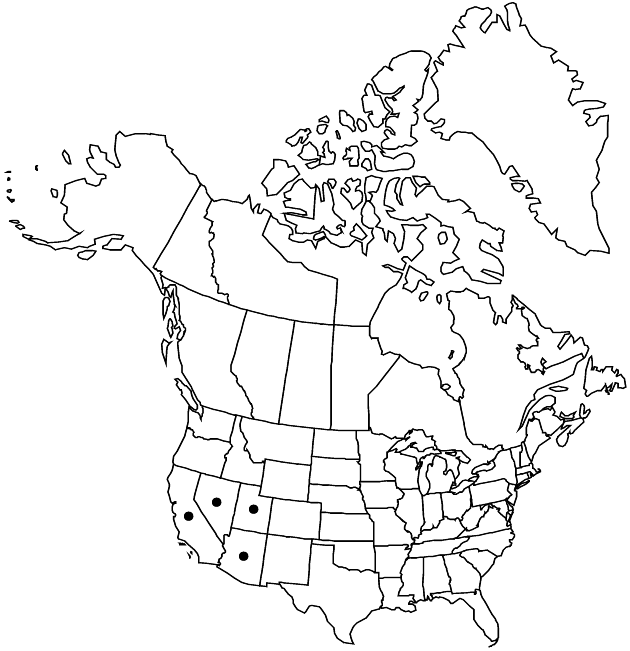Chaenactis fremontii
Proc. Amer. Acad. Arts 19: 30. 1883.
Plants 10–30(–40) cm; proximal indument glabrescent (early ± arachnoid, glabrous by flowering). Stems mostly 1–12; branches mainly proximal. Leaves basal (withering) and ± cauline, 1–7(–10) cm; largest blades linear and terete or ± elliptic and plane, ± succulent, 0–1-pinnately lobed; lobes 1–2(–5) pairs, remote, ± terete. Heads (± radiant) mostly 1–5 per stem. Peduncles 2–8(–10) cm, distally usually ± stipitate-glandular and, sometimes, ± arachnoid (at least early, often glabrescent by fruit). Involucres ± hemispheric to obconic (bases pale and ± truncate in fruit). Phyllaries: longest 8–10(–12) mm; outer usually glabrescent in fruit, apices erect, acute, ± rigid. Florets: corollas white to pinkish, 5–8 mm (inner); peripheral corollas spreading, zygomorphic, enlarged. Cypselae (3–)6–8 mm; pappi of (1–)4(–5) scales in 1 series, longest scales 6–8.5 mm, lengths 1–1.3 times corollas (apices visible among corollas at flowering). 2n = 10.
Phenology: Flowering Mar–May.
Habitat: Sandy or gravelly soils, warm deserts, often growing through shrubs
Elevation: -10–1600 m
Distribution

Ariz., Calif., Nev., Utah, Mexico (Baja California).
Discussion
Chaenactis fremontii is often the most abundant spring wildflower in the lower Mojave and northern Sonoran deserts, where it is reported to be a significant food source for desert tortoises (Gopherus agassizii Cooper). It also extends seaward into the southern San Joaquin Valley area of west-central California, often as hybrids with other taxa (see sectional discussion).
The involucre bases described above are characteristic of Chaenactis fremontii and can help separate it from some forms of C. stevioides.
Selected References
None.